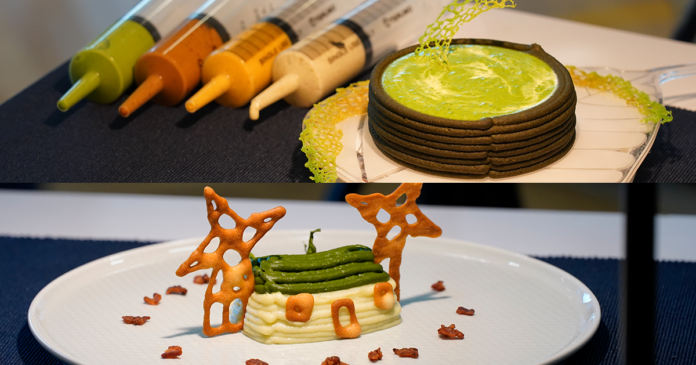We challenged 30 pre-university student teams to design, create, and “engineer” food via 3D food printing. The winning teams, RnD, and Yammy, share their experience about taking part in the SUTD x Armstrong 3D Printing Design Innovation Challenge.
Tell us more about your winning dish, and how it incorporates 3D food printing and food waste
RnD:
Our dish is a “green” house, a house that is green in color and incorporates sustainable living with the 3D printed windmills and vegetable garden. We used kale stalks in the ink for the base of the house and spinach stems for the roof.
Kale stalks and spinach stems are usually discarded but by blending them with other ingredients and printing them out, we can make them more appetizing for people to consume.
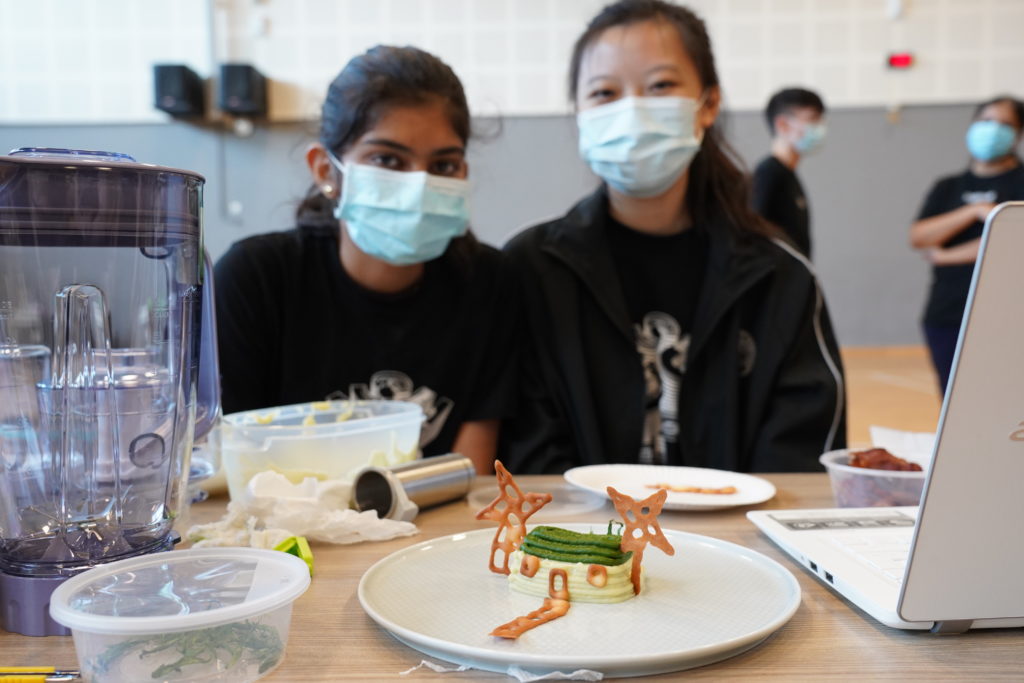 Devasreshtha (left) and Rui En (right) from Team RnD with their winning dish
Devasreshtha (left) and Rui En (right) from Team RnD with their winning dish
For the kale ink, we included potatoes and garlic spread. We started off by removing the hard parts of the kale stalks before we boiled the kale.
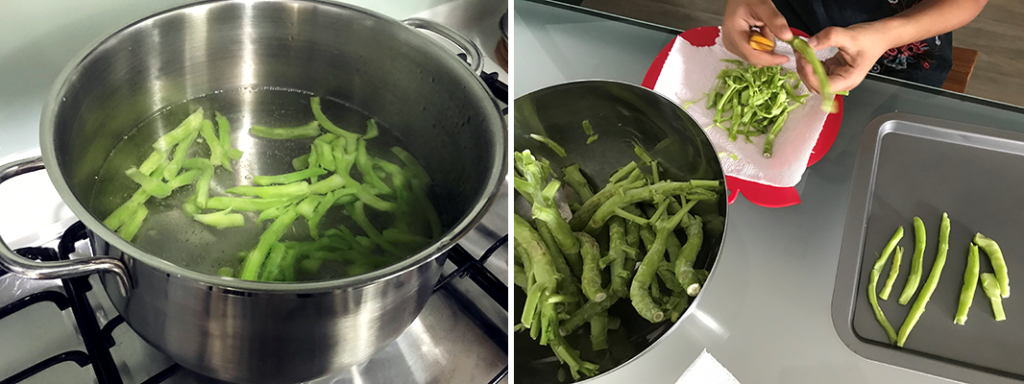 We then baked the potatoes and mashed them with garlic spread. After that, we blended it with the kale. We also included Xanthan gum in both the inks to stabilise them.
We then baked the potatoes and mashed them with garlic spread. After that, we blended it with the kale. We also included Xanthan gum in both the inks to stabilise them.
For the spinach ink, we included mushrooms and onions. We boiled the spinach and fried the mushrooms and onions together before blending everything.
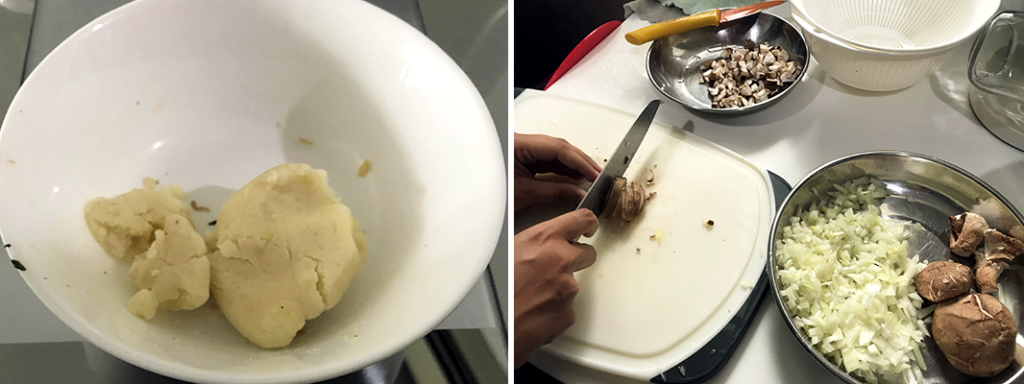
Yammy:
Our dish, The Louis Goh experience (dedicated to our lecturer who introduced and guided us in the competition), is based around North Indian flavours with a 3D-printed Palak Paneer base. To fully utilise the capabilities of 3D printing, we created three pockets where we could embed Paneer Butter Masala (Yellow), Chicken Tikka Masala (Red), and a cold tangy Coconut Chutney (White). We then poured a thin layer of Paneer Spinach mix to create a glazed surface look, finished by a tandoori spiced coral tuile.
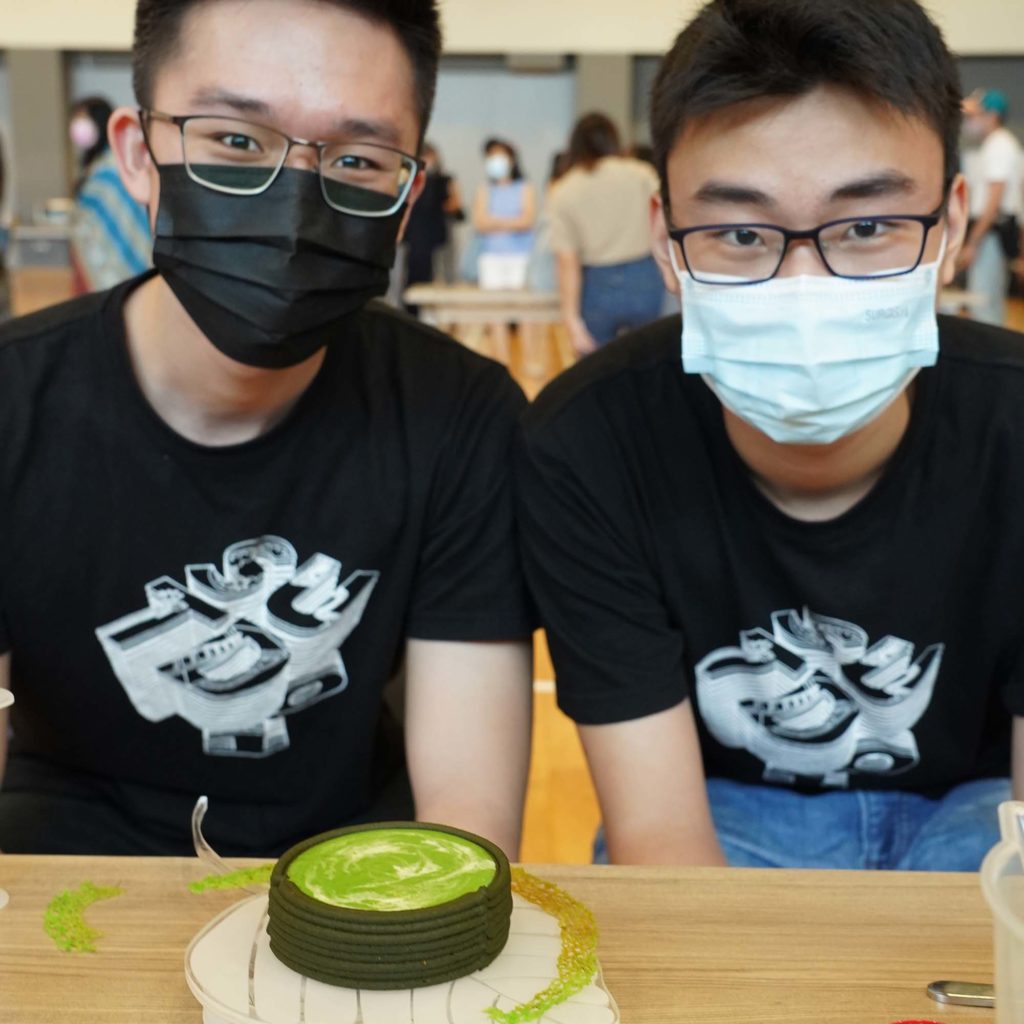 Ing Kai (left) and Zi Hon (right) from Team Yammy with their winning dish
Ing Kai (left) and Zi Hon (right) from Team Yammy with their winning dish
Since we visited a vertical farm that had tons of grow lights, we had the idea to make a leaf shape plate that pulses green slowly when scooped for extra style points. The other dish we made for Semi Finals was a Little Mermaid themed deconstructed New York Pizza, with Parmesan Clam shells, Pepperoni Pearls, Tomato paste base, a Garlic Truffle Yam mound and fried panko for the pizza crust taste.
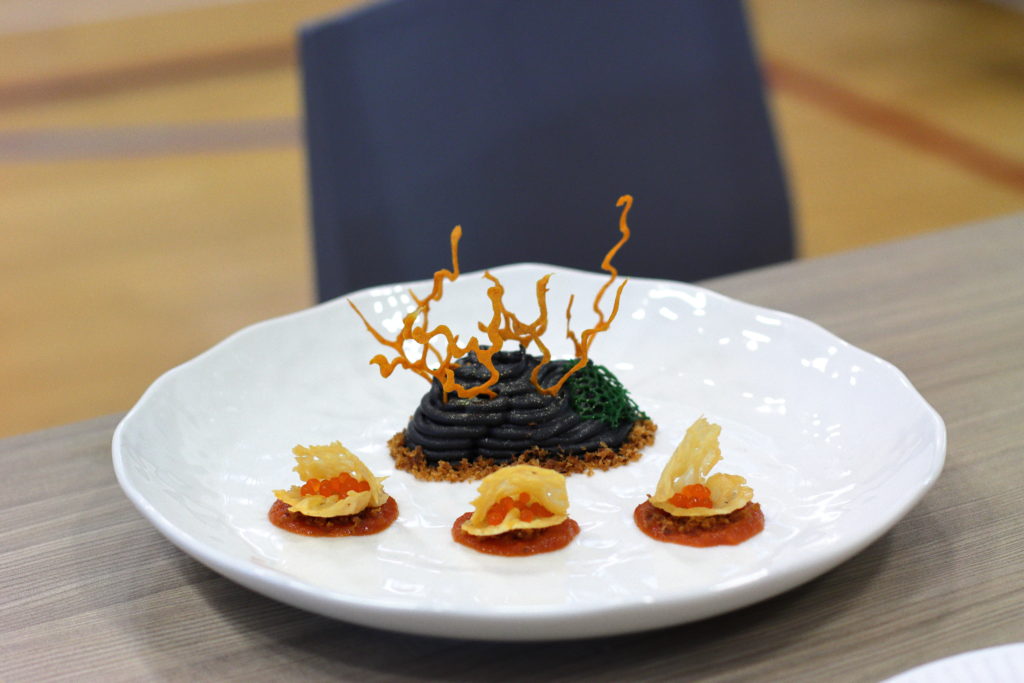
How did you find SUTD’s hands-on approach on learning?
RnD:
The exploration sessions were very helpful in helping us learn how to use the Foodini as we are all very new to it and need to try it for ourselves to understand how it works. There were mentors who provided assistance for anything we had trouble with.
Yammy:
We found SUTD’s approach to hands-on learning extremely useful, (I’m a hands-on learner myself!). I believe that getting my hands dirty (literally) is the best way to experience and learn what works and what doesn’t work, so all the hands-on practical sessions were definitely a key factor in our dish’s success.
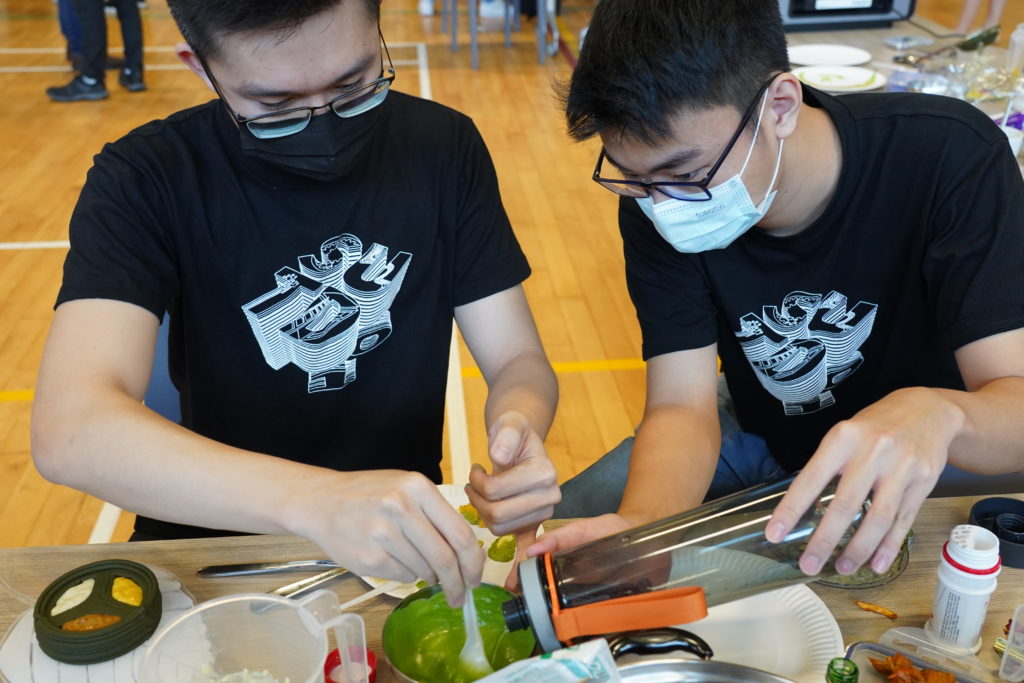
What are your takeaways from the challenge?
RnD:
Overall, we had a fulfilling and enriching experience, learning about food 3D printing and how 3D printing can be very useful to those who have eating disabilities like dysphagia, and with 3D printing they will be able to eat a decent looking meal.
We learnt that 3D printing has the potential to change the whole landscape of the food industry in the face of climate change, and the increased importance of sustainable living and food insecurity. 3D printing can be used to minimise food waste by taking leftover food and consumable waste to make a new dish and it has the potential to also be used as a tool to make artificial meat using animal DNA
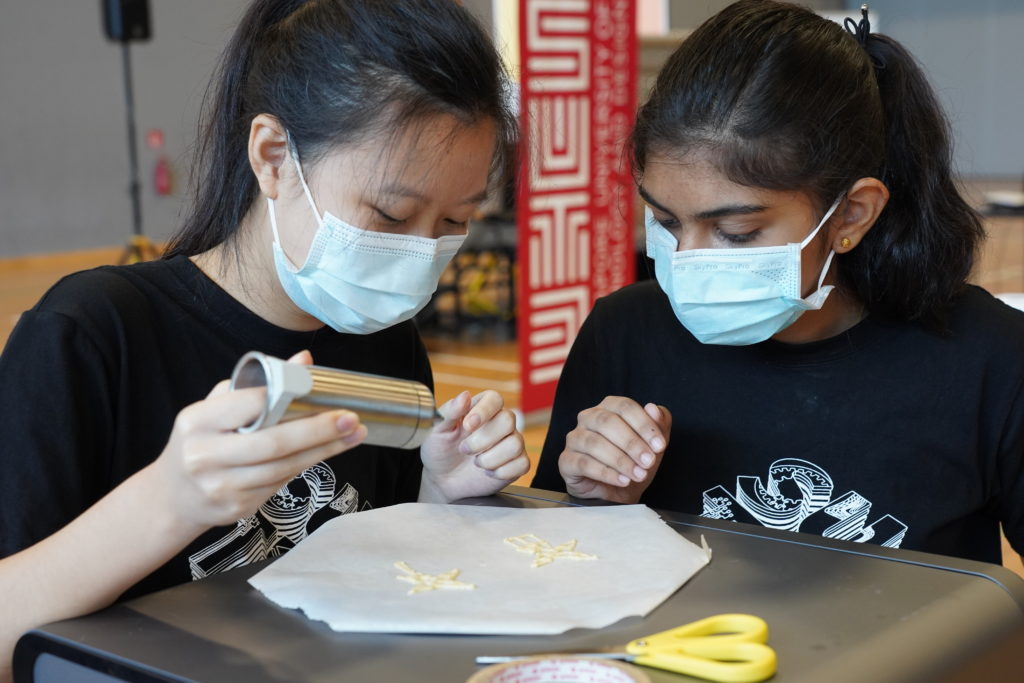
For dysphagia patients, since the food they eat is in a puree form, it does not look very appetising. When the puree is printed out into various shapes, the food looks much more appetising and they will look forward to eating their meals, as it will pique their interest.
Yammy:
My main takeaway of this competition is that you should find great team members that can complement what you are lacking. In this case, Zi Hon was a very technical hands-on maker, and was able to programme and create the light-up LED plate so that I could focus on the dish conceptualization and actual cooking.
How did this challenge change/update your perception on 3D food printing and sustainability (aka food waste)?
RnD:
We realised how much food waste is being generated, and how big of a problem it is. 3D food printing is one of the ways we can mitigate this issue, as we can make food as good as new by printing out the food in different structures. Moreover, since eating meat has a larger carbon footprint, we also learnt that we can print out meat using just the animal DNA whenever it is required in the larger scheme of things. This could also help to minimise food waste.
Yammy:
The competition updated our views on 3D food printing because we thought it was an extremely complicated technology that was newly developed, but now we know that even students like ourselves are able to leverage on this technology.




















